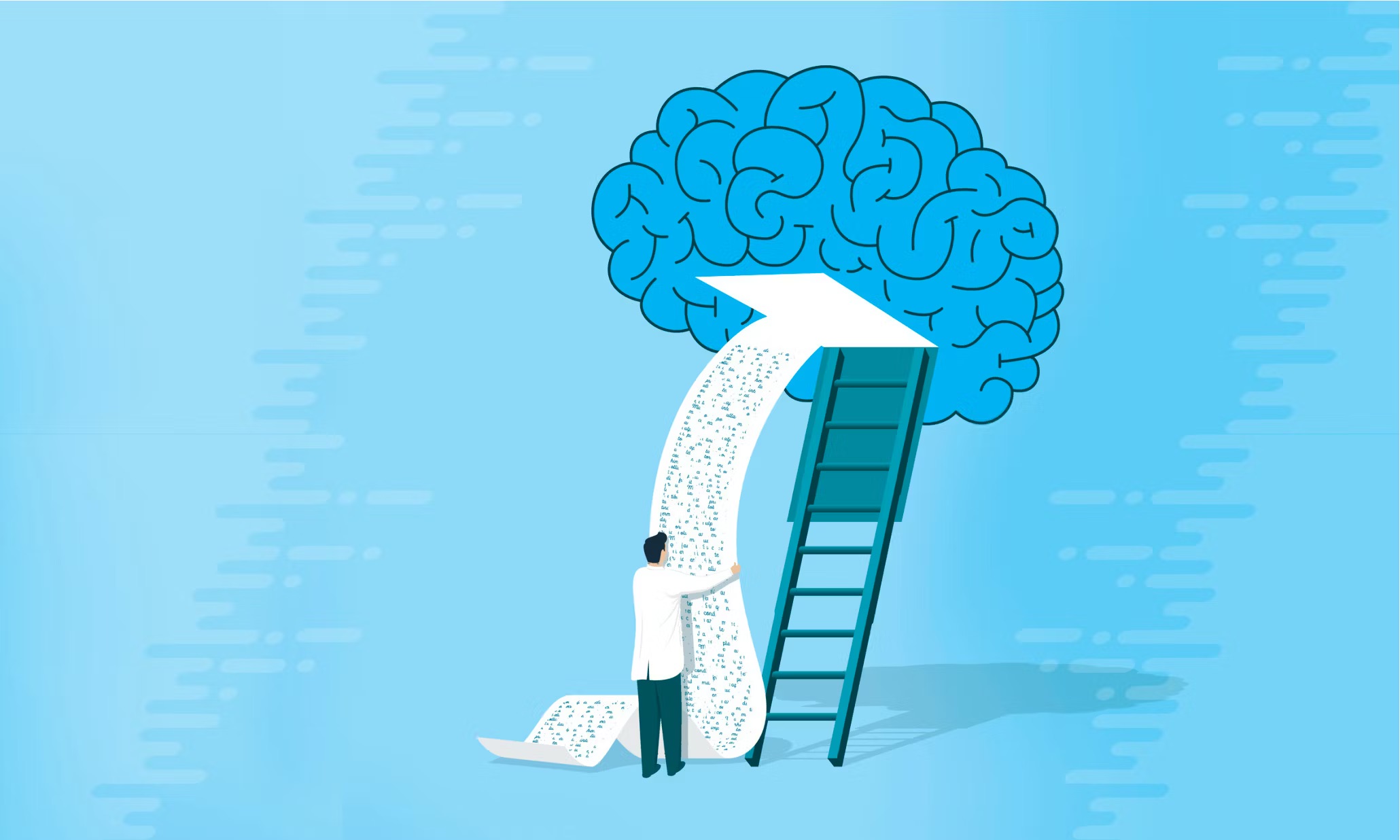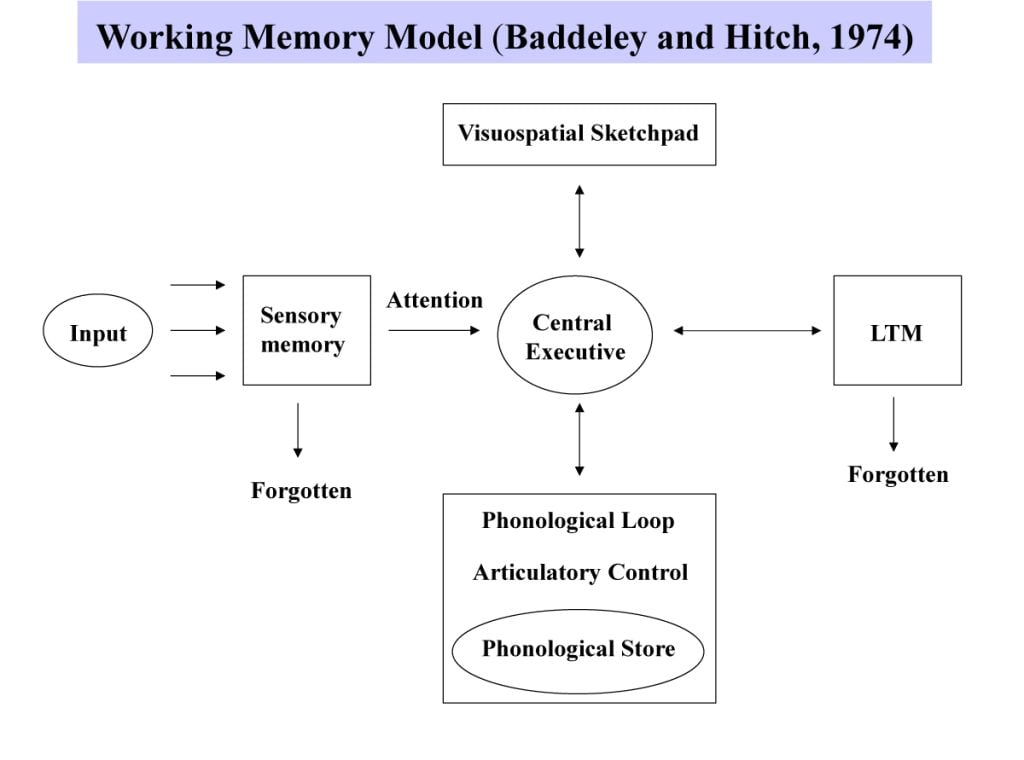- Published on
Memory Part 2

Table of Contents
- Baddeley’s Working Memory Model
- Baddeley’s Updated Working Memory Model
- Dissociation between Phonological Loop and the Visuospatial Buffer
- Memory Encoding
- Encoding and Episodic Memory
- How do we Learn?
- Levels of Processing (Craik & Lockhart)
- Evidence Supporting Levels of Processing
- Testing as Learning
- Accessibility vs. Availability of Memory
- Encoding Specificity
Baddeley’s Working Memory Model
- The main difference between this model and the Modal Model is the inclusion of a multi-component “working memory” system rather than having a singular unitary store.
- Irrelevant Speech Effect: If two things are auditory and one of them involves your inner voice, they are going to interfere with each other, thus we can understand that these are processed by similar and competing systems.
- Phonological Loop: → [Articulatory Control System, Phonological Buffer]
- Articulatory Control System: Subvocal, what you are hearing in your own head.
- Phonological Buffer: Holds acoustic information that you receive from the outside world and maintains the linguistic information in a phonological form.
- Visuospatial Sketchpad: Aids in the temporary maintenance of visual and/or spatial information (glancing at Google maps and holding the route in your head).
- Central Executive: Directs and controls all of the functions of the working memory.
- Directs attention to a particular place, divides attention as appropriate, switches attention among competing sources.

Baddeley’s Updated Working Memory Model
- The components of the original model did not explain the integration between the visual and phonological material, and how the LTM could influence immediate recall.
- Episodic Buffer: A place that temporarily integrates stuff from the auditory and visual sub-systems and is controlled by the central executive.
- Can serve as an auxiliary store when the primary ones are overloaded or disrupted.
- Allows for information retrieved from LTM to be available within conscious awareness.
Dissociation between Phonological Loop and the Visuospatial Buffer
- Stroke Patient PV:
- Patient had damage to the left hemisphere, temporal lobe, and frontal lobe regions.
- Patient could not perform auditory tasks but could perform visual tasks very well, suggesting that their phonological loop was impacted but the visuospatial buffer was still intact.
- Unable to perform mental arithmetic.
- Patient EI:
- Patient had damage to the right parietal lobe and parts of the occipital lobe.
- Normal auditory short-term memory and severe deficit in visuospatial memory.
- The phonological loop was intact, resulting in proficiency in auditory tasks but issues with visual tasks.
- These suggest that working memory is not a unitary function.
Memory Encoding
Encoding and Episodic Memory
- We remember different kinds of things like specific events or episodes.
- Can often recollect the source of the information, but sometimes, we just have a sense of familiarity; in this case, familiarity without any source memory.
How do we Learn?
- Maintenance Rehearsal: Focus on the to-be-remembered items themselves.
- Elaborative Rehearsal: Think about what the to-be-remembered items mean and how they are related to each other and other things you know.
Levels of Processing (Craik & Lockhart)
- Memory encoding is not a static action but a dynamic process.
- The depth of our memory depends on the depth of our processing.
Evidence Supporting Levels of Processing
- Incidental Learning: This is a type of learning that occurs without a conscious intention to learn, yet it can often lead to strong memory retention.
- Intentional Learning: When you are trying to learn something, you will more likely have deeper learning take place.
- Self-Reference Effect: Relating material to your own experiences significantly deepens encoding, making information more memorable.
- Generation Effect: Information becomes more deeply encoded when you generate it yourself, rather than passively receiving it.
Testing as Learning
- Testing Effect: The deep processing needed to take a test helps create longer-lasting memories of the material.
- Retrieval allows for learning effective mental routes to recover information, strengthening the memory trace, and weaving new contextual details into the memory.
Accessibility vs. Availability of Memory
- Not all information stored in long-term memory is readily accessible, even if it's available.
- Think of long-term memory as a vast library: just because a book is there doesn't mean you can find it instantly.
- Retrieval cues act as triggers to help bring a memory to the forefront.
- An example of a retrieval cue could be a specific scent reminding you of a person or past event associated with that smell.
Encoding Specificity
- The conditions of our environment can also serve as retrieval cues, such as:
- Physical location, our physiological state, and our mental state.
- Authors

- Name
- Apurva Shah
- Website
- apurvashah.org